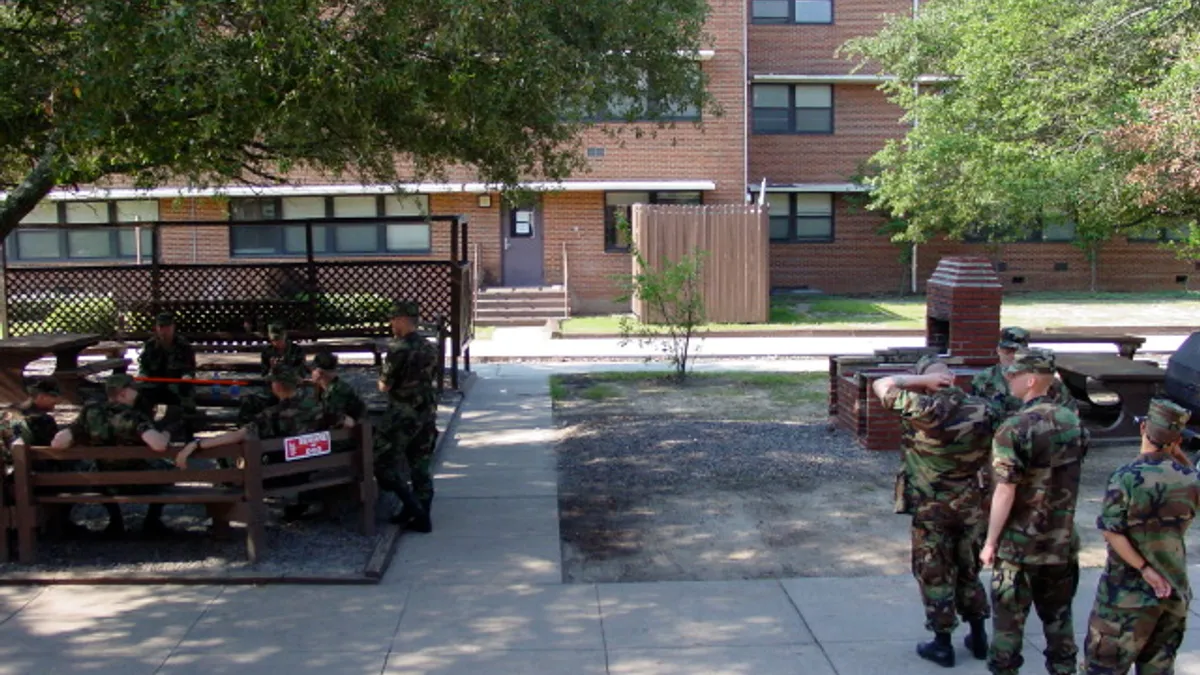Dive Brief:
- US Ignite has secured $6.97 million in funding from the U.S. Army Engineer Research and Development Center to expand and enhance its Smart Installation and Community Dashboard program, or SICD, at Fort Moore, Georgia.
- The new funding contract follows the development and deployment of three key custom-built software applications — aimed at providing heat risk management, building fault detection and remote surveillance — designed in the first phase of the SICD program. In the second phase, running from Sept. 2023 through Sept. 2025, US Ignite plans to expand SICD’s core capabilities to “more buildings, units and stakeholders” at Fort Moore, US Ignite CEO Nick Maynard said.
- The U.S. military has lagged behind local municipalities and institutions in deploying connected safety and security systems, but data from US Ignite’s Fort Moore program could spur wider rollouts of cost-effective capabilities at other bases, Maynard said.
Dive Insight:
Fort Moore has 12,900 permanent active-duty troops, about 20,000 trainees, 26,900 military family members and roughly 3,700 civilian employees, according to the U.S. Department of Defense. It is “the size of a small city,” where incremental improvements in facility efficiency or safety can generate significant cost savings, Maynard told Facilities Dive.
Each SICD capability addresses specific issues that hinder base facilities’ operations or needlessly increase operational costs, he said.
US Ignite’s building fault detection tool offers granular, real-time insights into building system performance, including heat pumps, air conditioning units, air handlers and electrical infrastructure. The tool feeds electrical meter data, “far beyond what utility-issued smart meters deliver,” into an AI algorithm that draws on machine learning to assess system component performance and flags potential issues for maintenance crews to investigate and fix, Maynard said. More proactive, efficient maintenance scheduling reduces the risk of costly breakdowns or spikes in electricity consumption caused by malfunctioning equipment, he noted.
The building fault detection tool also collects anonymized cell phone data from troops and civilian employees, helping maintenance leaders track building occupancy over time. When units stationed at Fort Moore rotate overseas, the buildings they leave vacant or under-occupied do not need to be cooled or heated to the same extent and the potential savings can be significant, Maynard said.
US Ignite’s heat risk management capability uses a custom-built app that helps base and unit leaders understand environmental risks in real time. Heat exhaustion and air quality issues put “hundreds of troops” from Fort Moore in the hospital each year, Maynard said.
The heat risk management app collects data from nearby weather stations and on-base temperature, humidity and air quality sensors, offering a more granular and up-to-date look at on-base conditions than public weather reports alone, Maynard said. Leaders can use that data to adjust training schedules, fitness activities, hydration protocols and cooldown procedures, such as turning up air conditioning in the barracks before trainees return — measures that could meaningfully reduce heat-related hospitalizations and conserve on-base medical resources during heatwaves, he noted.
Though it’s too early to quantify the SICD capabilities’ financial payback at Fort Moore, the hope is that the second phase of the program will demonstrate a “clear return on investment,” Maynard said. Other US Ignite projects, including a weather data tool the organization deployed at Fort Carson, Colorado, have shown promising results, he added.
The Fort Carson tool enabled automated weather data gathering and reporting across the sprawling base near Colorado Springs, replacing an old-fashioned “phone tree” wherein base and unit leaders called one another for hyper-local weather reports during winter storms. While the development of the system costs roughly $400,000 and requires “tens of thousands of dollars” annually to operate, closing Fort Carson for a single day amounts to about $3.5 million, Maynard said. Therefore, just one “correct” call a year, he noted, pays for itself multiple times over.












